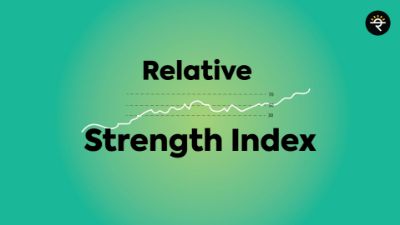Before investing in any asset, one question that pops up in your mind is what is the markets’ view on this stock/asset. Will the bulls remain strong or will the bears take over soon? This is an important point to analyze before entering into a stock. Indicators like moving averages can tell us about the trend in an asset but it does not tell us how strongly the trend will continue or not. For that, we have an indicator called RSI. To put it simply, RSI tells us about the strength in the price movement of an asset. Sounds interesting right? Want to know more about this indicator? Pull up your socks and let’s get started!
What is RSI (Relative Strength Index)?Before we jump on to understanding RSI, we must learn about oscillators. I know oscillators sound complex but don’t worry, that’s what I am here for. An oscillator is a tool that moves in a range. It has a trend indicator that fluctuates within that range (imagine something like a pendulum). This trend indicator moves in response to the recent price movement of an asset. RSI is the most popular oscillator used by technical analysts.
Where Relative strength (RS) = Average Gain / Average loss over the look-back period.As RSI is readily calculated for us on charting platforms, we won’t be focusing on the calculation part. Rather, we would be learning about its application in today’s blog.What does it tell you?

RSI tends to pick up when the average gain is greater than the average loss for a look-back period i.e. an asset has relatively moved up more number of times in the last 14 days than it has fallen. The opposite holds when the average loss is greater than the average gain i.e. an asset has relatively moved down more number of times in the last 14 days than it has moved up.
How to use it?
In a strong uptrend, the RSI value tends to stay above 30 and frequently crosses 70. In a strong downtrend, the RSI value tends to stay below 70 and frequently crosses 30. Through this, investors can interpret the strength in the trend for an asset. Ideally, buying opportunities can be explored when RSI is in the oversold zone and a reversal of the prior downtrend/down move is observed. Similarly, shorting opportunities can be explored, when RSI is in the overbought zone and a reversal of the prior uptrend/up move is observed. Using RSI along with other indicators like moving averages, MACD, pivot points, etc. can help you gain a more confident view.
How to analyse RSI along with price movement?
For that, we need to understand another term called Divergence. A divergence is when the price of an asset moves in the opposite direction of a technical indicator. Even divergences can be used to take positions. We already know that the price can either move up or down. Hence, we have 2 kinds of divergences- Bullish and Bearish divergence. Confused? No worries! Let’s understand divergences one by one with an example.
a. Bullish Divergence
A bullish divergence is observed when the price of an asset makes a lower low and RSI makes a higher low. This means that bullishness is strengthening and the prior downtrend/down move might reverse. If this divergence is observed when the RSI is in the oversold zone then a strong up move is possible. Hence, buying opportunities can be explored in such cases with confirmations from other patterns and indicators. You can observe this on the PVR chart below. A bullish divergence was observed on 18th May 2020, when the stock price made lower lows but RSI made higher lows, after which the stock moved upward.
A bearish divergence is observed when the price of an asset makes a higher high and RSI makes a lower high. This means that bearishness is strengthening and the prior uptrend/up move might reverse. If it is observed when the RSI is in the overbought zone then a strong down move is possible. Hence, shorting opportunities can be explored in such cases with confirmations from other patterns and indicators. You may observe this on the chart of PVR. A bearish divergence was observed on 21st Jan 2021, when the stock made a higher high but RSI made a lower high after which the stock moved downward.

RSI is an oscillator that indicates whether a stock is overbought or oversold based on the magnitude of price movement. It can work best in a trending asset when combined with other indicators like MACD, Pivot, BB, etc. Technical analysts around the world use different RSI levels as per their strategy. You can also increase or decrease the look-back period for the same. If you decrease it then RSI will react faster and reach the overbought/oversold zone frequently. If it is increased then the opposite holds. After reading this blog if you felt like “Ye Dil mange more” then I have one more RSI strategy for you which I have discussed in my extensive yet simplified course on Technical Analysis. I am sure you would love it so don’t forget to check out the link. Until next time!



